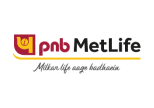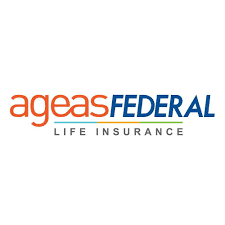GetTax Benefitsu/s 80C & 10(10D)
Best Investment Plans

It is a form of investment which gives you guaranteed returns mentioned while investing along with life coverage.

iSelect Guaranteed Future- iAchieve
You Invest
₹1 Lakh p.a.10 yearsYou GET Tax Free
₹29.1 Lakh20 years

Smart Wealth Plan
You Invest
₹1 Lakh p.a.10 yearsYou GET Tax Free
₹27.3 Lakh20 years

POS Goal Suraksha
You Invest
₹1 Lakh p.a.10 yearsYou GET Tax Free
₹27.1 Lakh20 years
Places To Buy Gold In Coimbatore
There are many places in Coimbatore where you can buy gold from:
Jewellery Stores: You can buy gold in Coimbatore from Lalitha jewellery, Kalyan Jewellers or Joy Alukkas. Karpagam Jewellers is another renowned chain from where you can make your purchases. Most of the jewellers in Coimbatore boast of the latest in design and patterns.
Gold Saving Schemes: If you are looking at other options, you can also invest in the various gold savings schemes. Under these schemes you can buy in a lump sum by saving every month. One important factor is that you should not forget to check the live price of gold in Coimbatore before buying.
NBFCs: Another source of buying the yellow metal in Coimbatore is buying through NBFCs. There are a number of NBFCs available in the city, For Example: IIFL Gold Loan, Muthoot Finance Gold Loans, etc.
Gold As An Investment
Gold as an investment is very beneficial, making it an ideal investment for people in India. Following a list of reasons why one should invest in gold -
Protects Against Inflation Risk: Gold is thought to have an inflation hedge. According to research, gold has significantly decreased risk and outpaced the rate of inflation. In cases where the local currency loses value, many individuals even consider gold as a substitute for it. Considering that gold is a genuine physical asset that often retains its value, investing in gold coins is a wise choice.
A Good Way To Save Money: Purchasing gold coins is a wise strategy to save money for individuals who are unable to do it in cash. The ability of gold to effectively store wealth across countless generations is the reason for its significance in today's economy. However, this cannot be true of paper money, which adds to the advantages that make gold coins a wise choice as an investment.
Easy To Buy And Sell: Purchasing gold coins for financial purposes is easier than purchasing gold jewellery. In contrast to other ornaments, it allows you to purchase it in the purest form and with the least amount of weight feasible and for a relatively low manufacturing fee. Additionally, due to the great demand, you can always check the most recent market price and sell it hassle-free. If you don't want to sell, you can put it up as collateral when applying for a loan from one of the reputable financial organisations.
No Maintenance Required: The nicest thing about purchasing gold coins as an investment is that, unlike other tangible assets, you do not need to worry about maintaining them in order to achieve the highest returns. The gold coins may be safely stored at home for hundreds of years and sold whenever you choose at the current market rate. This makes it one of the main advantages of buying gold coins to protect your future and the future of your family.
Stability In Price: Price Stability: Purchasing gold coins for investment has the extra benefit of price stability. The price of gold is far more constant even during times of financial crisis when compared to other investment choices available in the market, and it never declines by a significant amount. Whenever there is a crisis, people tend to invest in gold, which quickly drives up its price.
Things To Remember While Buying Gold In Coimbatore
The mere thought of this valuable metal is enough to draw our attention away from everything else. This is all it takes for a dream gold acquisition to turn into a nightmare. Indians buy the most gold jewellery in the world on average, with jewellery outlets all around the country witnessing a consistent stream of customers. It's easy to make mistakes in the wild rush to buy gold, but following a few basic procedures can ensure that you receive the most bang for your buck -
Check Today’s Gold Rate in Your City: This may appear to be a simple step, but you'd be amazed how many people overlook it. Today gold rates vary by city because, aside from the transportation costs of importing gold into a city, each city imposes its own levies on gold.
Sales: Gold purchases are at their highest during specific times of the year, which causes the gold rate today to vary. It's a good idea to buy gold jewellery during the off-season when prices are lower, and discounts are plentiful.
The Correct Colour: Many jewellers deceive their consumers by charging exorbitant prices for rose gold and white gold jewellery. Keep in mind that white, yellow, and rose gold are all the same price. This is because obtaining a specific colour only necessitates the addition of a few metals. So, regardless of the colour of your gold jewellery, you should never pay more.
Check The Weight: In India, the majority of gold jewellery is sold by weight, with heavier pieces costing more. Precious stones, such as diamonds and emeralds, are frequently set in gold jewellery, making it heavier. Jewellers weigh a piece in its entirety, which means that you could wind up paying for gold that isn't truly there, so keep that in mind when buying studded jewellery.
Buy Hallmarked Jewellery: Purchasing hallmarked jewellery is the safest option. The purity of gold is ensured by the Bureau of Indian Standards' hallmark. We are all aware that there are several purity levels of gold, such as 18 karats and below, 22 karats, and 24 karats. You should avoid purchasing jewellery marked as 22 karats but really having purity lower than 22 karats. To assure the integrity of the jewellery, it is preferable to purchase hallmarked items.
Factors Which Affect The Price Of Gold In Coimbatore
Price of gold in Coimbatore and India changes with the change in economic situation. If you are interested in investing your money in gold there are few influential situations which you should be looking at:
The U.S. Dollar: Gold rates fluctuate with the fluctuations of dollar rate because Price of Gold is inversely proportional to Strength of the US Dollar. As the dollar goes up gold price will be down and vice versa. Change in strength of other exchanges will also affect but the influence of the dollar is very high compared to which other currencies are not considerable.
Instability of The Reserve Bank: Stability of Reserve Bank policies also play a major role which affects the price of gold in Coimbatore and India. So an individual who invested in gold will not bother about Bank disappointments and unpredictable monetary strategies such as demonetization because gold is a safe refuge in such conditions. So, during such times everyone will chase gold so price increases as well.
Financing costs: Gold prices reflect increments and falls in loan fees. The gold cost may increase again on the grounds as loan fees diminish. For individuals offering gold to free up assets due to which gold costs may mellow. There is a lower opportunity cost to hold on to gold when contrasted with different speculations. With prominent appreciation for gold loan costs likely to be low.
Gold Reserves Held by the Government: The government of India holds gold reserves, and it purchases or sells gold through the Reserve Bank of India. Thus when the central bank of India buys more gold, the price of gold goes up.
Global Events: The cost of the yellow metal in India is impacted by any changes in the price of gold on a worldwide scale. This is mostly owing to the fact that India is one of the top gold importers, and as a result, when import prices vary as a result of movements in the price of gold across the world, the same is subsequently reflected in domestic gold prices.
FAQ About Gold Rate Today In Coimbatore
-
-
What is the Difference Between 22 karats and 24 karats Gold?
Given the inclusion of additional metals, 22k gold is more resistant to wear and tear when used to produce jewellery. Although 24k gold has a beautiful colour, it won't hold up well when used to make jewellery. It is too delicate to withstand damage.
-
How Do You Double-Check Your BIS-Hallmark in Coimbatore?
One can simply double-check the BIS-Hallmark by using the Verify HUID feature on the BIS care app.
-
How to Check for the Hallmarked 916 22 Karats Gold in Coimbatore?
Gold is categorised on the basis of its purity such as 24K, 23K, and 18K, etc. If it's hallmarked, BIS will be added as a prefix. For e.g-22K gold will be referred to as 'BIS 916' gold, 23K gold is referred to as BIS 958 and so on. The number i.e. 916 or 958 is part of the hallmark seal.
-
Do I need to pay tax on bringing gold into Coimbatore from abroad?
Without going through customs, an Indian male traveller is permitted to bring duty-free jewellery worth Rs. 50,000, and Rs. 1 Lakh for female passengers. The traveller must spend more than a year living abroad.






































